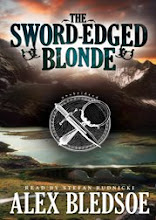
Tim Hall’s novel
Half Empty (which I reviewed
here) is a real rarity: a self-published book that avoids all the pitfalls of that particular enterprise. I spoke with Tim about both writing the book and publishing it himself, through his own
Undie Press.
Alex: A musician can record a CD in their parents' basement, master it on a laptop and burn handfuls of copies, distribute these from their car trunk, and still retain their professional dignity and the respect of their peers. Often they are even praised for their "indie" spirit. Why do you think this doesn't apply to self-published writing?Tim: I wish I knew. Probably because the whole business of writing and publishing is so much older and more established; it's actually that snobbery that has been proven to be vanity. But that's an attitude that I completely reject without malice--it's just an archaic and untenable position in today's multimedia world. It also makes this a really exciting time to be a self-publisher--I have no doubt we're going to make a much bigger, more positive mark on literary consciousness than anybody is yet willing to give us credit for.
Did you attempt to get Half Empty
picked up by a major publisher? If so, what reactions did you get?I was shopping around a couple of manuscripts in the late 90s/early 00s and got increasingly positive feedback from agents and publishers. Finally an editor at
Other Press expressed some interest in
Half Empty. I was incredibly excited, since Other Press is one of my favorite publishers and I use a lot of their titles to get psychological insight into my characters, and at that point I stopped shopping it around. Well, after more than a year of back and forth there were some changes at the press, the editor left, and that was that. I was crushed for a few days, then I realized I just couldn't go through that heartbreak again, so I started Undie Press as a way to turn my disappointment into action.
Undie Press states it wants to "remove the stigma of self-publishing once and for all." How has that stigma impacted the release, critical reception and sales of Half Empty
? The only overt resistance I've felt has been from distributors and media, and given the flood of self-published titles coming onto the market that resistance is certainly understandable. Media attention and distribution are of course hugely important, so I've focused on events, readings, book fairs and the like. It's been great training and I love meeting potential readers personally. Things have actually changed considerably in the four years since I published
Half Empty; some of the big review journals that wouldn't consider self-published books back then have since changed their policies, and fewer distributors have hard rules against self-published titles, and I'm incredibly happy and grateful about that.
But in general, as far as readers are concerned, they couldn't care less and I've gotten nothing but positive feedback and encouragement. The publishing and promoting sides of the business are indistinguishable from the creative end for me. The whole publishing process is the art form that I'm working in now.
You've said elsewhere that the story isn't autobiography. What attracted you to this character and these situations? Well, like much of my stuff it was written using something of an autobiographical framework--for example, like Dennis I had to give up drinking in my late 20s, and I thought chronicling the emotionalism of early sobriety was a great topic to explore--but what I found as I was writing it was that the character just kept talking back to me. I'd have fights with him, plead with him, negotiate. Finally he got away from me and became his own person. In that way my characters absolutely taught me more about myself, which is kind of the magic of fiction.
From an artistic standpoint, I was influenced by Des Esseintes, the character in [Joris-Karl] Huysmans'
Against Nature, one of my very favorite books. I tried transplanting that ruined, sensitive, lonely archetype into a Brooklyn hipster, except with internal monologues built on emotionalism and neuroses, instead of the philosophical and historical musings in Huysmans.
But getting back to the question, what I liked about the character was that, like me, what he was really looking for was a sense of agency in his own life. People feel so trapped and bullied at every socio-economic level. Dennis was a way for me to examine how romantic failure, family, money, competition, jobs, bosses, substances and the like conspire to keep us limited and afraid. That's why I was billing it as "the horror of sobriety," because he only begins to see all this once he's quit medicating himself. One guy actually wrote to me and said, "I was expecting bugs to be crawling up his arms from withdrawal," and I was like, "Then you don't what's really terrifying about getting sober!"
The entire story is seen, and evaluated, through Dennis' perspective, yet you chose to write in a third-person voice; why?That's a great question. My little private joke when I was first writing it was that it was a "third-person memoir," since I was mapping my emotional states from that time through the character. Early sobriety is so alienating and dissociative; your body and thoughts really turn against you in such frightening ways, that my initial intent was really to write a memoir. But like I said, these damn characters are hard to keep in their boxes, and Dennis grew into his own person by the end.
Thanks to Tim for taking the time to talk to me about Half Empty
. He has re-released the novel with extra chapters and an extended ending; you can purchase it here.

























































